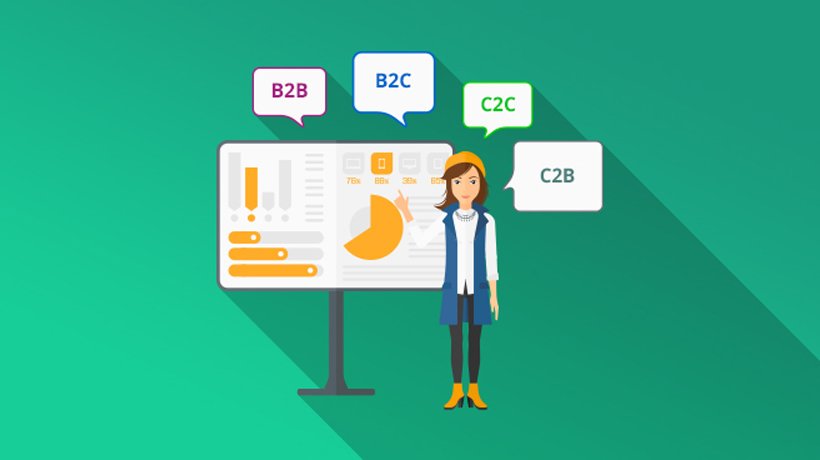Generally, there are seven main models of ecommerce that businesses can be categorized into:
B2C.
B2B.
C2C.
D2C.
C2B.
B2A.
C2A.
Let’s review each type of electronic commerce in a bit more detail.
- Business-to-Consumer (B2C)
B2C ecommerce refers to transactions that take place between a company and a customer. One of the most well-liked sales formats in the context of e-commerce is B2C. An online shoe purchase from a shop is an example of a business-to-consumer ecommerce transaction.
- Business-to-Business (B2B)
B2B ecommerce, in contrast to B2C, includes transactions between companies, such as a manufacturer and a distributor or retailer. B2B solely occurs between businesses and is not geared towards consumers.
- Consumer-to-Consumer (C2C)
Consumer-to-consumer ecommerce, one of the oldest types of e-commerce, involves the exchange of goods or services between customers. This includes C2C sales arrangements like those seen on eBay or Amazon.
- Direct-to-Consumer (D2C)
D2C, a more recent e-commerce model, is a company that sells goods directly to the final consumer as opposed to going through a retailer, distributor, or wholesaler.
A brand that relies on subscriptions, such as Netflix or Dollar Shave Club, is a typical illustration of D2C e-commerce.
- Consumer-to-Business (C2B)
By offering their goods or services to businesses, individual customers are reversing the conventional retail model.
iStock, an online store where stock images may be bought directly from different photographers, is an illustration of a C2B e-commerce company.
- Business-to-Administration (B2A)
B2A refers to transactions between online companies and governments. Products and services connected to legal documents, social security, etc. are just a few examples.
- Consumer-to-Administration
Similar to B2A, C2A involves customers selling goods or services to a government agency. Online tax preparation and consultation for education are examples of C2A.



